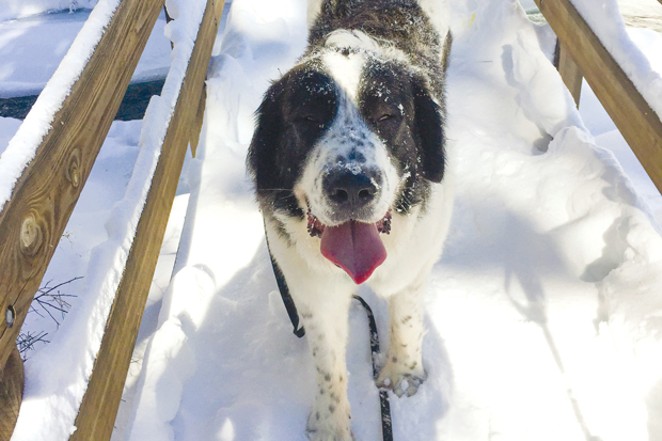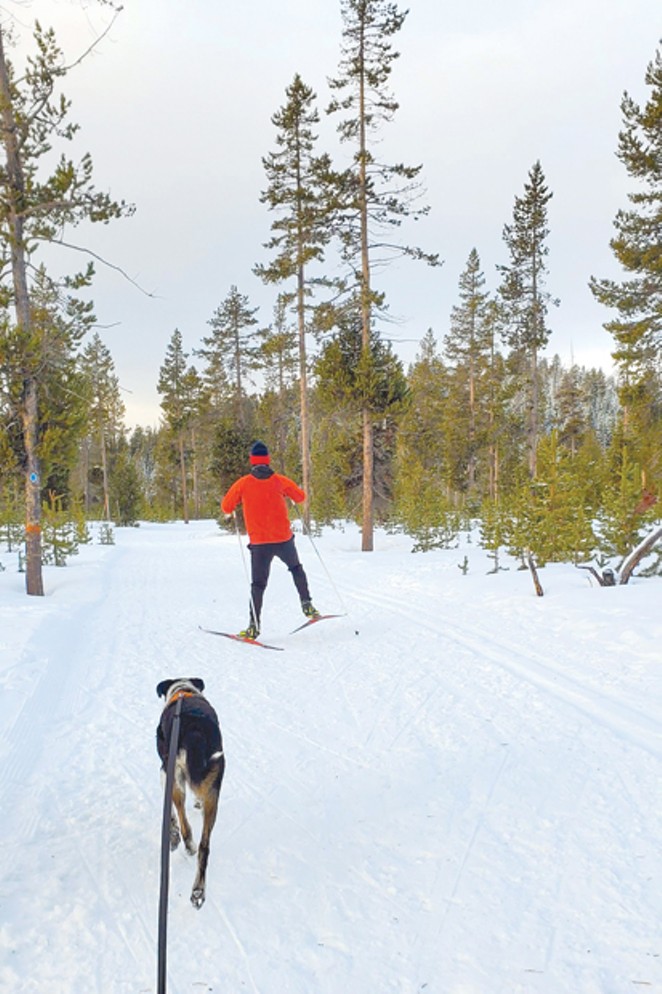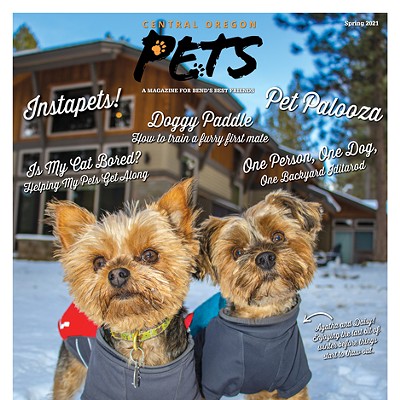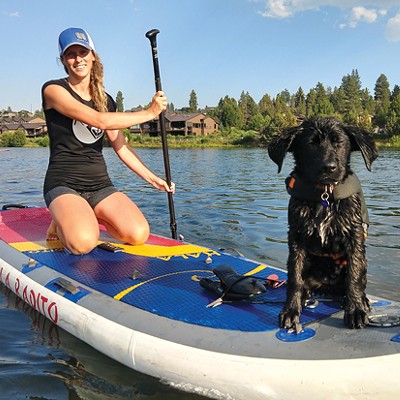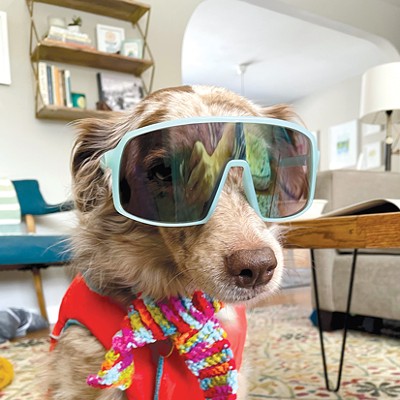According to the Pacific Sled Dog & Skijor Association, Skijoring is a winter sport where a person on skis is pulled by a horse, a dog (or dogs) or a motor vehicle. It is derived from the Norwegian word skikjøring, meaning ski driving.
Dog skijoring, specifically, is a sport in which a dog (or dogs) assist a cross-country skier. The skier provides power with skis and poles, and the dog adds additional power through pulling. The skier and dog are attached by harness and a length of rope. The dog must be motivated by its own desire to run and take direction by voice.
The PSDSA suggests that many breeds of dog participate in skijoring, and dogs greater than 40 pounds are ideal. "Athletic dogs such as Pointers, Setters and herding breeds take to skijoring with glee, as do the northern breeds, such as Siberian and Alaskan Huskies, Malamutes, Samoyeds, and Inuit dogs; however, any large energetic dog is capable of enjoying this sport. Golden Retrievers, Giant Schnauzers, Labs and many cross-breeds are seen in harness. Pulling breeds work well also such as American Bull Terriers, Staffordshire Terriers, American bull dogs, and mastiffs."
With the modified 2021 Iditerod in full swing—from professional sled dogs to DIY run-of-the-mill skiing with your pup—there is a big range of learning, teaching and participating in the skijoring scene. With a few months of snow left in the hinterlands, here's a rundown of tips for novices and how you can get more involved in clinics and racing.
Giving it the old college try
"I'm kind of a hack with skijoring," admittedly, longtime local and teacher Dan Pilver notes.A common starting point for most greenhorns, Pilver purchased his critical gear (a harness and set-up), from Bend-based Spindrift adventure dog gear and watched a couple of YouTube videos.
Pilver humbly confesses, "I don't have any real training and it shows while I'm on the trails. I started skijoring about 10 years ago, out of necessity with my last dog, a Great Pyrenees, since he would wander off if not on a leash. I tried skiing with a long leash at first, but skijoring is a lot easier. Skijoring with a large breed dog is easier in some ways since they aren't running at high speeds... Walter, my current dog [a Pyrenean Mastiff], is three years old and we have been skijoring for two years. He absolutely loves it."
Lessons learned Pilver wants to pass on? He cautions about the challenge of downhills, suggesting extra care to not run your canine companion over. He also notes an age-old struggle: the excitement of crowds at parking lots and trailheads.
"Once we get away from folks and other dogs, Walter settles into skijoring. One issue that isn't unique to skijoring is dog's getting snowballs stuck on their feet. It definitely helps to have a solution for that figured out before skijoring (booties, musher's wax, etc.)."
Recreational and competitive training
Looking to link up with folks into skijoring as a full-on lifestyle? Check out Cascade Sled Dog Club, a nonprofit organization promoting the education, training, racing, showing and humane care and treatment of working dogs, as well as Skiing (skate) for Skijoring, dedicated to those mushers/individuals looking to improve their skiing so they can have their best skijor experience. Cascade Sled Dog Club also periodically holds "pull clinics," or practicing skijoring through pulling on a bike.Pacific Sled Dog & Skijor Association, whose mission is to encourage and promote the sport of running sled dogs and skijoring, both recreationally and competitively shepherd the most up-to-date etiquette, training and race information in the region. Although races commonly happen yearly in La Pine, Bachelor Butte, Diamond Lake and Chemult, this year Mush without Slush is the only event still running. A dryland race near Sisters in which newcomers are very welcome is happening March 27-28.

